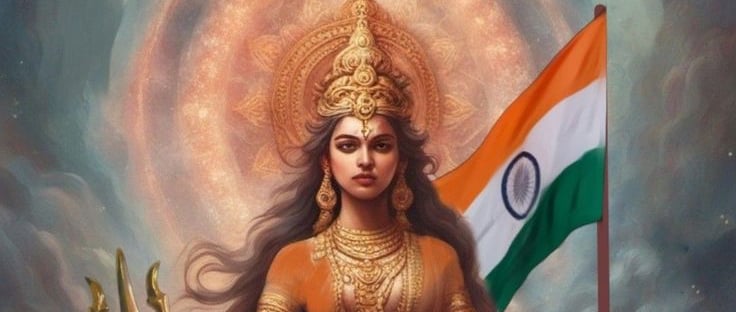Manusmriti
Critics allege that it promotes discrimination against women and justifies societal inequalities. However, a closer examination of the text and its context reveals a different narrative. This article aims to dispel the myths surrounding Manusmriti, using evidence from the text itself and other Hindu scriptures.
RELIGION
1/24/20253 min read


Debunking the Myth: Manusmriti Does Not Defy Women or Society
Manusmriti, one of the ancient Hindu texts, has often been misrepresented and vilified, especially in the modern discourse. Critics allege that it promotes discrimination against women and justifies societal inequalities. However, a closer examination of the text and its context reveals a different narrative. This article aims to dispel the myths surrounding Manusmriti, using evidence from the text itself and other Hindu scriptures.
Understanding Manusmriti in Context
Manusmriti, also known as the "Laws of Manu," is a dharmashastra (a treatise on dharma) that was written to guide society in ancient India. It is crucial to understand that Manusmriti reflects the socio-political realities of its time and was never meant to be a universal or eternal rulebook. Hinduism, being a dynamic and diverse tradition, has always allowed space for debate, reinterpretation, and evolution.
The problem lies not in the text but in selective interpretations and the failure to understand the context. Let us analyze some key verses to illustrate this point.
Manusmriti's Respect for Women
"यत्र नार्यस्तु पूज्यन्ते रमन्ते तत्र देवताः।"
(Manusmriti 3.56)
Translation: "Where women are honored, there the gods rejoice; where they are not honored, no sacred act yields rewards."
This verse unequivocally highlights the importance of respecting and honoring women in society. It directly contradicts the notion that Manusmriti devalues women. On the contrary, it emphasizes that a society's well-being and prosperity depend on the dignity and respect accorded to its women.
"पिता रक्षति कौमारे भर्ता रक्षति यौवने।"
"रक्षन्ति स्थाविरे पुत्रा न स्त्री स्वातंत्र्यम् अर्हति।"
(Manusmriti 9.3)
Critics often interpret this verse to argue that Manusmriti denies women independence. However, the correct interpretation reveals that the text underscores the importance of protection and care for women at different stages of life, given the societal vulnerabilities of the time. It is a reflection of responsibility, not oppression.
Women's Role in Religious Activities
Manusmriti mandates the involvement of women in rituals and ceremonies, affirming their centrality in spiritual and societal life:
"A woman must always be cheerful, skillful in the management of her household, careful in cleaning her utensils, and economical in expenditure." (Manusmriti 5.150). This verse outlines the qualities expected of women in managing household responsibilities, which was a revered role in ancient Indian society.
Manusmriti on Social Harmony
1. "सर्वे भवंतु सुखिनः, सर्वे सन्तु निरामयाः।"
While this verse is from the Upanishads, its ethos resonates with the spirit of Manusmriti. The dharmashastra's primary aim was to establish a harmonious society where all sections lived in mutual respect and cooperation.
2. Varna System Misrepresented
Critics often link Manusmriti with caste-based discrimination. However, the original text's varna system was based on guna (qualities) and karma (actions), not birth. For instance, Manusmriti (10.65) states:
"By their acts, all castes can rise or fall in status." .This clearly shows that societal roles were meant to be dynamic and merit-based.
Debunking the Fake Narrative
The portrayal of Manusmriti as a misogynistic and casteist text is a result of selective misquotations and colonial-era distortions. British administrators and Indologists cherry-picked verses to paint Hindu society in a negative light, often ignoring the egalitarian principles embedded in the text. Unfortunately, this narrative has persisted in modern academia and media.
Moreover, Hinduism does not have a single scripture or authority. Manusmriti is one among many texts, and its prescriptions were never binding. Saints like Swami Vivekananda advocated for reinterpretations of scriptures to align with changing times, emphasizing the fluidity of dharma.
Hinduism’s True Spirit: Equality and Liberation
Other Hindu texts also emphasize the dignity of women and societal harmony:
1. Mahabharata (Anushasana Parva 45.46): "Women are the root of prosperity, enjoyment, and dharma."
2. Rigveda (10.85.26): "The wife and husband, being equal halves of one substance, are equal in every respect."
These verses reiterate that Hindu philosophy values equality and inclusivity. Manusmriti, when understood in its entirety, aligns with this broader ethos.
Equality in Hindu Philosophy
Hindu scriptures emphasize that all beings are equal manifestations of the same divine consciousness (Brahman). The concept of oneness is fundamental, breaking barriers of caste, gender, and race.
1. Unity of All Beings
"एकं सत् विप्रा बहुधा वदन्ति।"
(Rigveda 1.164.46)
Translation: "Truth is one; the wise call it by various names."
This verse underscores the unity of existence and the idea that all paths lead to the same ultimate truth. It emphasizes religious pluralism and rejects exclusivity.
"सर्वे भवन्तु सुखिनः, सर्वे सन्तु निरामयाः।"
(Brihadaranyaka Upanishad 1.4.14)
Translation: "May all be happy; may all be free from illness."
This prayer reflects the universal well-being that Hinduism aspires to achieve, transcending all social and cultural divisions.
2. Equality of Souls
"आत्मवत् सर्वभूतेषु।"
(Mahabharata 12.268.9)
Translation: "Treat all living beings as you would treat yourself."
Hinduism’s ethical framework encourages empathy and equal treatment for all beings, advocating a life of compassion and harmony.
"अहम् ब्रह्मास्मि।"
(Brihadaranyaka Upanishad 1.4.10)
Translation: "I am Brahman."
This declaration affirms the inherent divinity in every individual, regardless of their social status or identity.
Conclusion: A Call for Reinterpretation
Manusmriti does not defy women or society. It is a historical document reflecting the norms of its time, and like any text, it must be read in context. The persistent negative portrayal is a result of selective misinterpretation and propaganda.
To truly understand the ethos of Hinduism, one must look beyond the distortions and engage with the texts in their entirety. By honoring women and fostering societal harmony, Manusmriti aligns with the timeless values of dharma.